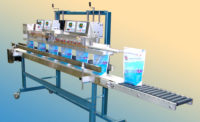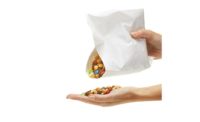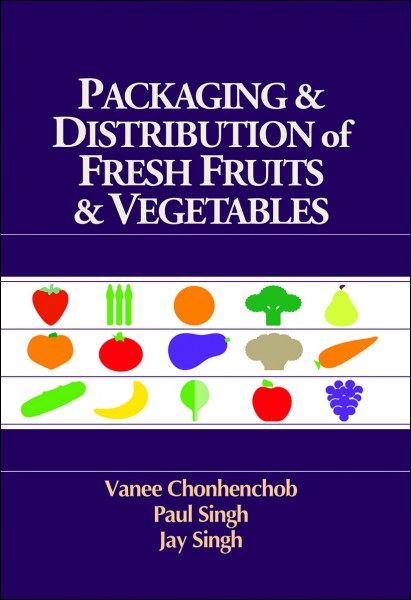Trends in packaging materials


















Extended product shelf life, product protection, convenience and durability are all qualities of reliable food packaging. Now, new packaging materials are really working hard to accommodate today’s changing ‘grab-and-go’ world.
Packaging has to be lightweight, durable and extend the shelf life of baked goods and snack foods throughout their distribution. Convenience is a must, too. Resealable containers, once considered innovative, are now commonplace. At the same time, smart or active packaging technology informs consumers that contents are sealed tightly. All these advances are designed to address consumers’ needs in a world where grab-and-go is becoming the norm.
“Millennials lead busy lives filled with multi-tasking,” says Shaina Milleman, marketing manager, Dow Packaging & Specialty Plastics, Midland, MI. “That’s why we’re seeing single-serve portions dominating grocery store shelves. Portable packaging makes it easy for people to grab something on their way out the door. It’s easy to open and reseal. To address this big trend, Dow developed a polyethylene standup pouch that’s lightweight and easy to handle and offers multiple functionalities and sustainability benefits.
“Another trend we see is a major shift to more fresh products. These types of products require sophisticated packaging materials that can extend shelf life without compromising the brands’ promise for a more natural taste. Thus, packaging needs to incorporate high-performing resins that improve barrier properties, and the sealants used must be durable, yet safe enough for snack food and bakery applications.”
Resealable popularity
More baked goods and snack foods are shifting to resealable, flexible packaging structures. They’re being packed in standup, resealable pouches instead of rigid containers or conventional layflat, flexible packages that have no reclosable feature.
“We also see a growth in the use of resealable packaging for private-label products in the salty snack category,” observes Art Malcomson, director of sales and marketing, Zip-Pak, an ITW company, Manteno, IL. “A good example of this is the front-panel Inno-Lok zipper closure used on Target’s Archer Farm’s potato chip packages.”
Zip-Pak’s Inno-Lok pre-zippered film is a patented technology involving reclosable fasteners that are pre-attached transversely to packaging films, thereby producing a roll of pre-zippered film. Inno-Lok can be used with barrier and nonbarrier packaging applications and enables manufacturers to run both reclosable and regular bags on any packaging line without additional equipment investments.
Sonoco, Global Flexibles Division, Hartsville, SC, also has developed a suite of packaging for bakers and snack producers that includes easy-open and reclosable features, a range of cold-seal and heat-seal structures and transparent, custom barrier structures. “We’ve been working on films with coatings—technology that supports higher barrier performance, yet minimizes the thickness of the substrates,” says Sharayla Cleare, marketing manager. “We also supply specialty finishes for shelf appeal, such as matte films, lacquers and metallic inks, so our customers can focus more on interaction with the product.”
DuPont collaborates with many food companies on packaging materials that appeal to consumers, such as added convenience and extended freshness, while improving both sustainability and material performance, according to Yasmin Siddiqi, global packaging director for DuPont Packaging & Industrial Polymers, Wilmington, DE. For example, packaging converter Clear Lam Packaging uses DuPont Bynel coextrudable ethylene copolymer adhesive resin as an adhesive (tie layer) in the PrimaPak packaging structure for Fisher Roasted Party Peanuts. Bynel creates a strong bond between dissimilar materials.
“The PrimaPak package is a flexible, recloseable, pop-up ‘box’ made from a single roll of flexible film and enhanced with an outer label that adds vertical strength and rigidity,” Siddiqi explains. “Clear Lam combines all the components of the finished package onto one roll of film, eliminating the need for preformed bases, lids, labels and shrink-banding that goes into the assembly of today’s bulky rigid packaging.”
Moisture and freeze protection
MeadWestvaco Corp., Richmond, VA, recently introduced Evertain, a hermetically sealable, airtight paperboard package for foods requiring substantial protection from oxygen and moisture. The patented technology
combines a specially sealed inner seam with a barrier coating to preserve freshness and extend shelf life.
“Food manufacturers invest so much in perfecting the crunch of a chip or the flavor of an almond,” notes John Rau, vice president of strategic marketing. “Evertain is designed to preserve those textures and flavors through the supply chain, all the way to the consumer.” Evertain comes in four sizes, including round and nonround varieties, with customizable barrier levels against oxygen and moisture.
For frozen applications, Octal, Plano, TX, developed several new varieties of polyethylene terephthalate (PET) sheet. In the sheet area, Octal offers an impact-resistant grade that resists cracking and shattering when frozen. The company also developed a highly glueable surface for blister-packs.
“We are developing a heat-resistant PET resin for applications where hot food is served in takeaway containers,” says Joe Barenberg, chief operating officer. “One of the key performance aspects for certain product lines is shatter- and shard-resistance after being flash-frozen. There is a desire to continually reduce the risk of free shards in the bakery and snack-food market. PET will continue evolving to address this need.”
Active packaging
Active or smart packaging technologies that interact with the consumer also are evolving. Packaging that recloses securely and informs the consumer that the package has been sealed is a key consideration in today’s flexible packaging solutions.
“In addressing this trend, Zip-Pak recently introduced Sensory Feedback Fasteners, a line of resealable closures,” says Malcomson. “They feature performance characteristics that appeal to a consumer’s sense of sound, sight and touch. Another closure designed to extend product shelf life is the resealable matrix reclosure Vector, which offers easy alignment. Both Sensory Feedback Fasteners and Vector are suitable for a broad range of packaged consumer products, including granola, baked goods and salty snacks.”
Compared to five years ago, more bakers and snack food producers are seeking multifunctional flexible packaging designs today that are easy for consumers to use. To meet this need, Dow developed PacXpert flexible bottle packaging material technology, a collapsible, lightweight material that can be made into bulk flexible containers that ship flat, have a threaded fitment closure similar to that of a rigid bottle and have dual handles.
PacXpert can hold a variety of products, including dry and liquid baking and snack ingredients; granular, flaked or extruded snack foods; and more. In addition, its collapsible cube shape acts as a source reduction, which affords manufacturers shipping efficiencies. And it allows brand owners to print on all four sides for optimal brand visibility, according to Milleman.
3M recently introduced Carry Handles that offer consumers convenience at the final stage of the supply chain—the retail checkout stand. The tape-strip-based handles easily attach to just about any product or package, providing a strong hold on large, awkward and heavier items. For food companies looking for a way to make their brand stand out on store shelves, Carry Handles can be pre-applied by manufacturers. Customized versions can be applied by hand or by high-speed, automated applicators for the best results.
“3M Carry Handles are a waste-saving alternative to retail bags,” says Mark Dussel, U.S. marketing manager, bundling, reinforcing & diversified packaging, 3M, St. Paul, MN. “The waste savings can be quantified at 97%, compared to the plastic content (measured by weight) of a typical large retail bag.”
Looking ahead, Siddiqi of DuPont sees even more advances in packaging solutions for bakers and snack food producers. “Right now, we see convenience and portion-controlled packaging continuing as big drivers, not just in industrialized markets, but in emerging regions of the world, as a rising middle class is looking for time-saving solutions,” she says. “This is a great time to be in the industry, as the trends of reducing food waste and providing time-saving meals and snacks are stimulating new ideas and new packaging solutions.”
Looking for a reprint of this article?
From high-res PDFs to custom plaques, order your copy today!

















